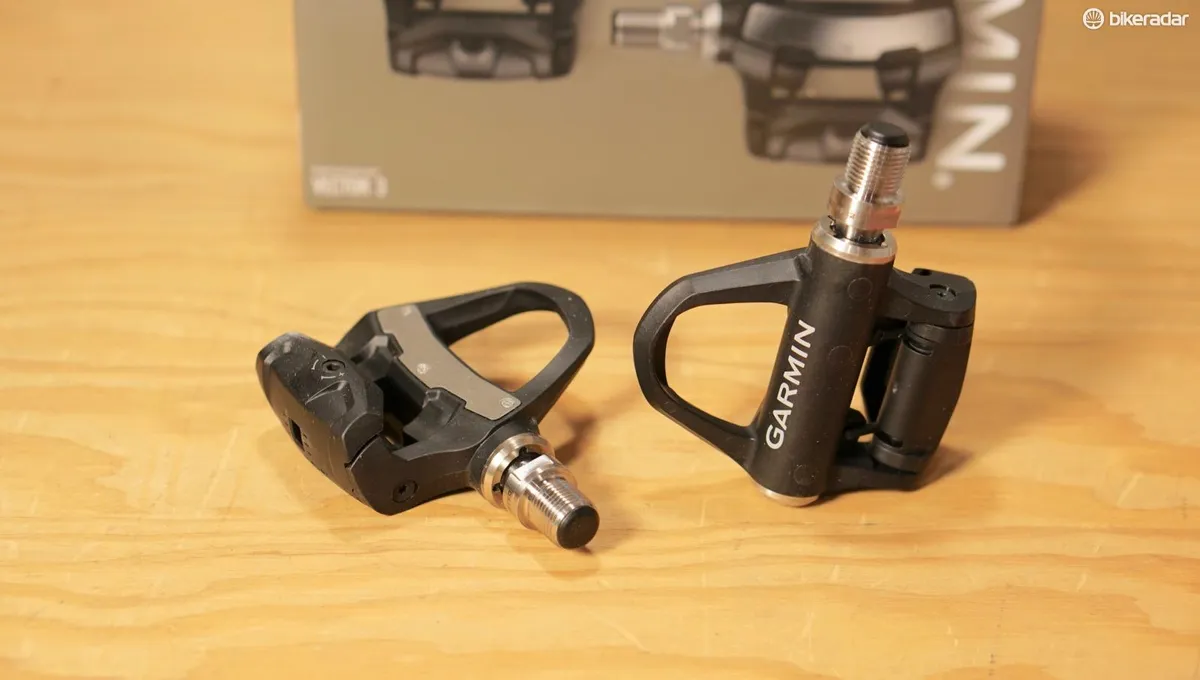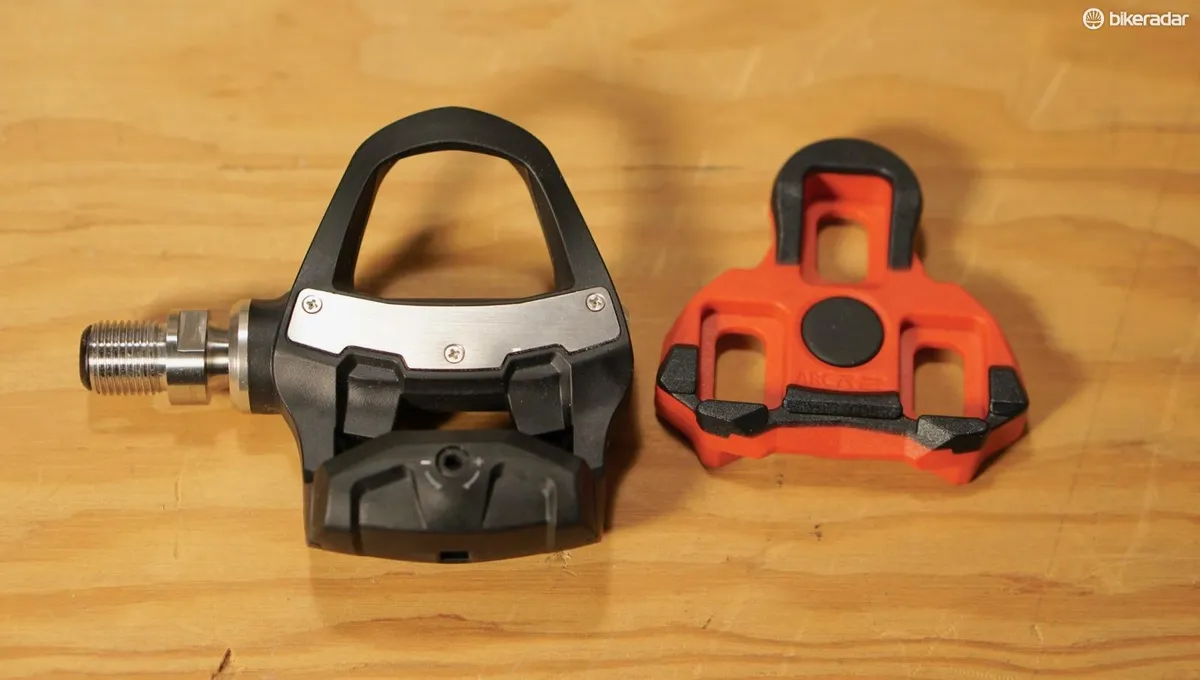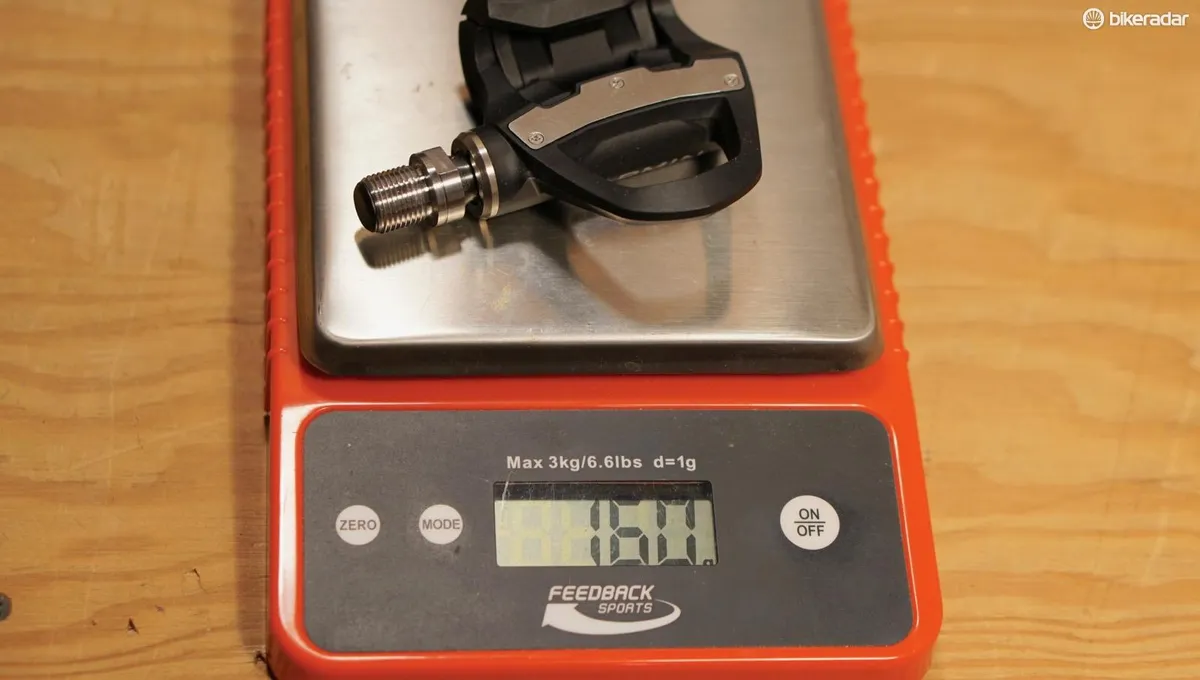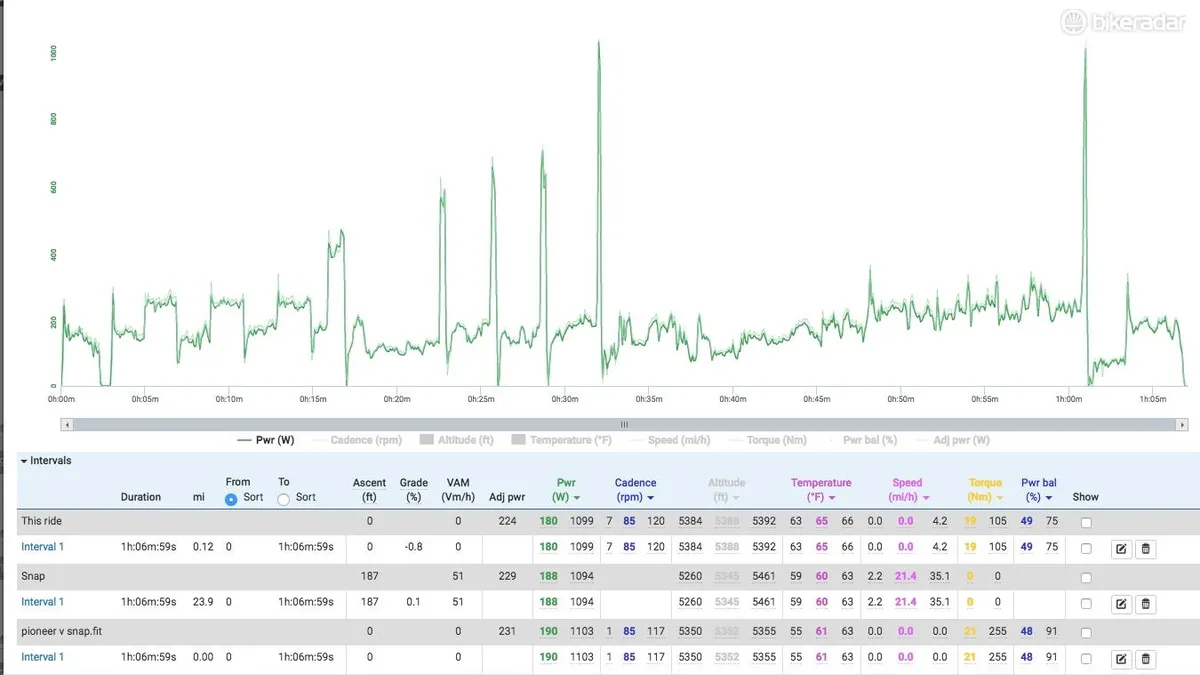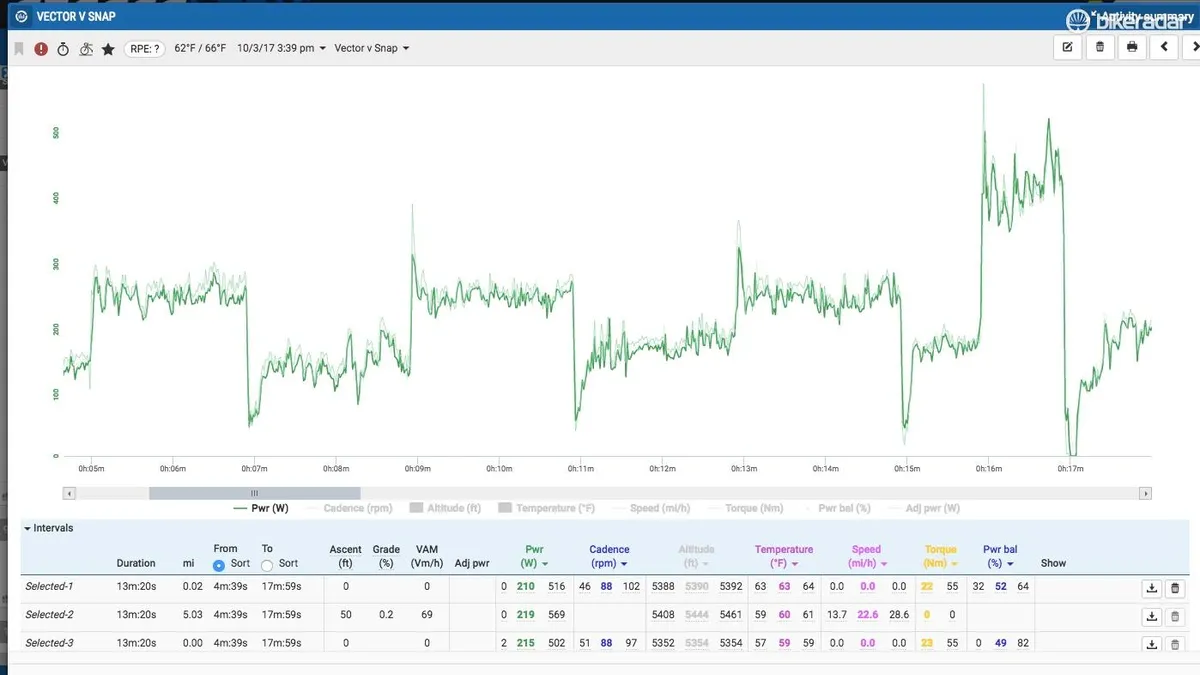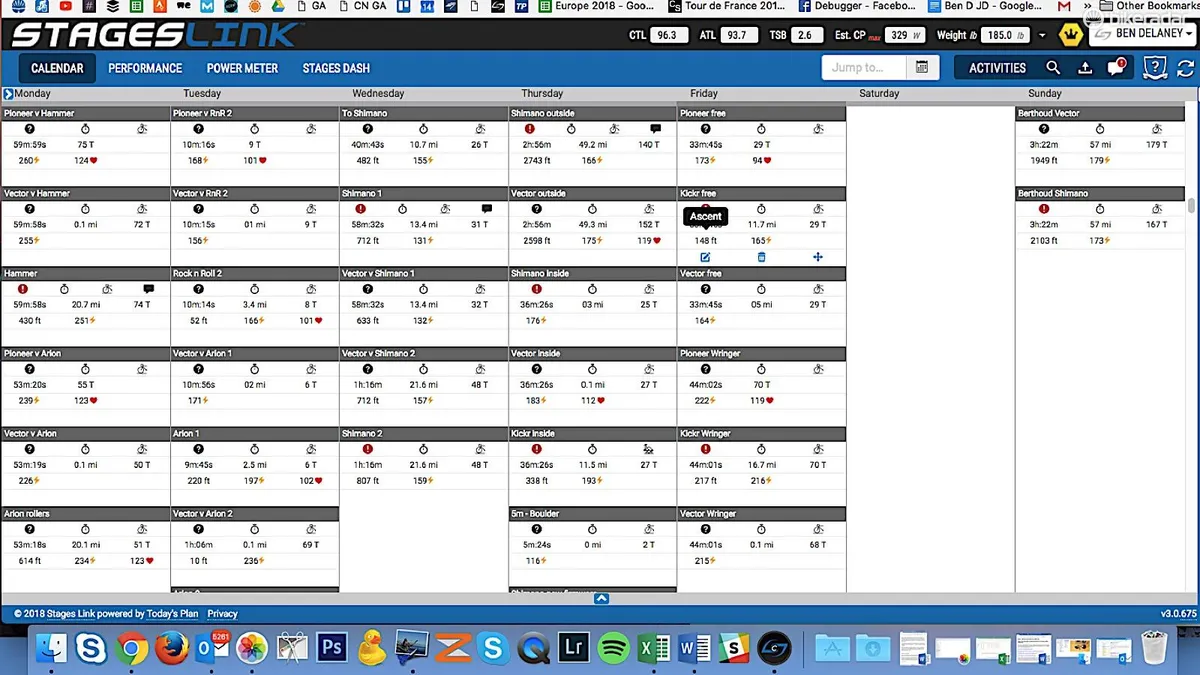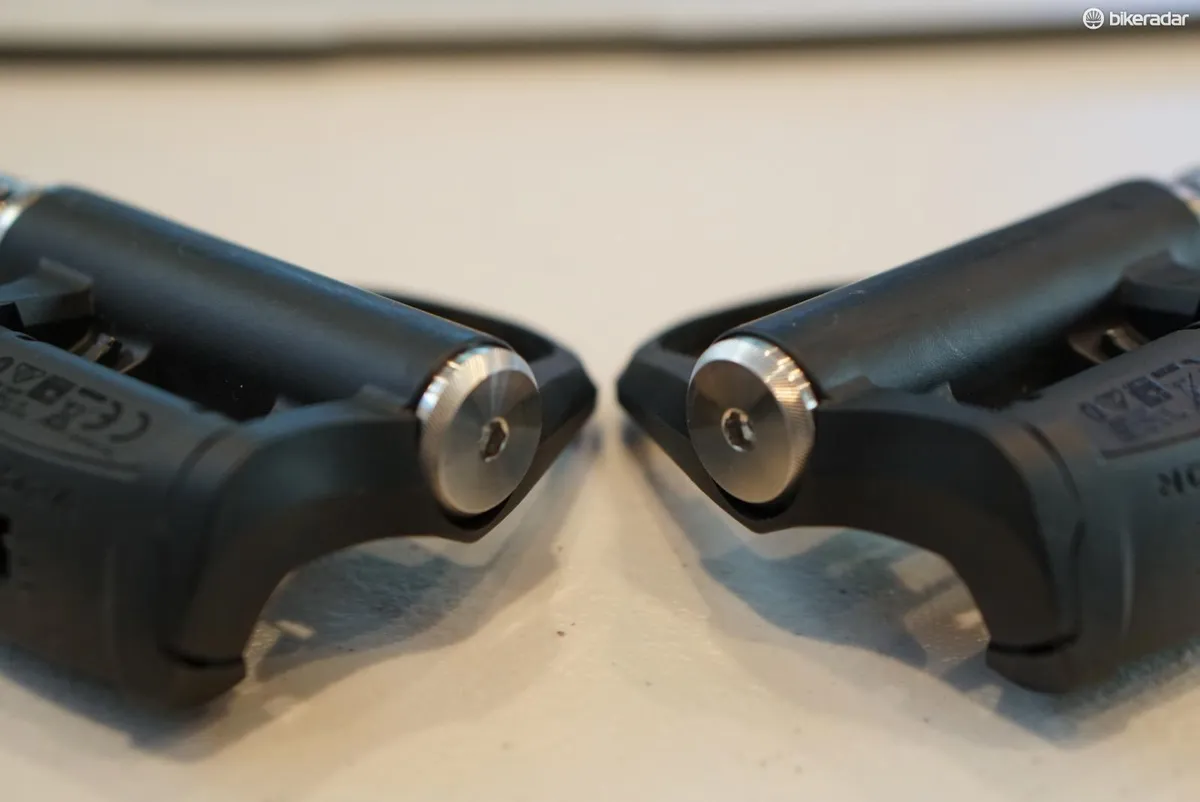After a couple hundred hours of testing against other power meters (and four sets of batteries), I can say the Garmin Vector 3 pedals are generally a very good training tool.
As with any power meter, the location of the power meter is limiting — you have to give up your pedal of choice unless you already use Look Keos — but conversely, pedals are far and away the easiest type of power meter to travel with and swap between bikes.
Garmin has since released a new power meter pedal system, the Rally. Click through to read our full review of the Garmin Rally RS200 power meter pedals.
Garmin Vector 3 at a glance
- Left and right pedals measure similarly (not always the case with L/R meters!)
- Threads into any crank — no longer multiple models for different crank widths
- Consistently tracks well with other dependable meters
- Actual battery life averaged 60hr, not the claimed ‘up to 120 hours’
- 316g claimed, 320g measured for the pair
- Look Keo cleats required
- 12.2mm stack height
- ANT+ and Bluetooth
- Need a Garmin Edge 520, 820, 1000 or 1030 to access all the Cycling Dynamics measurements
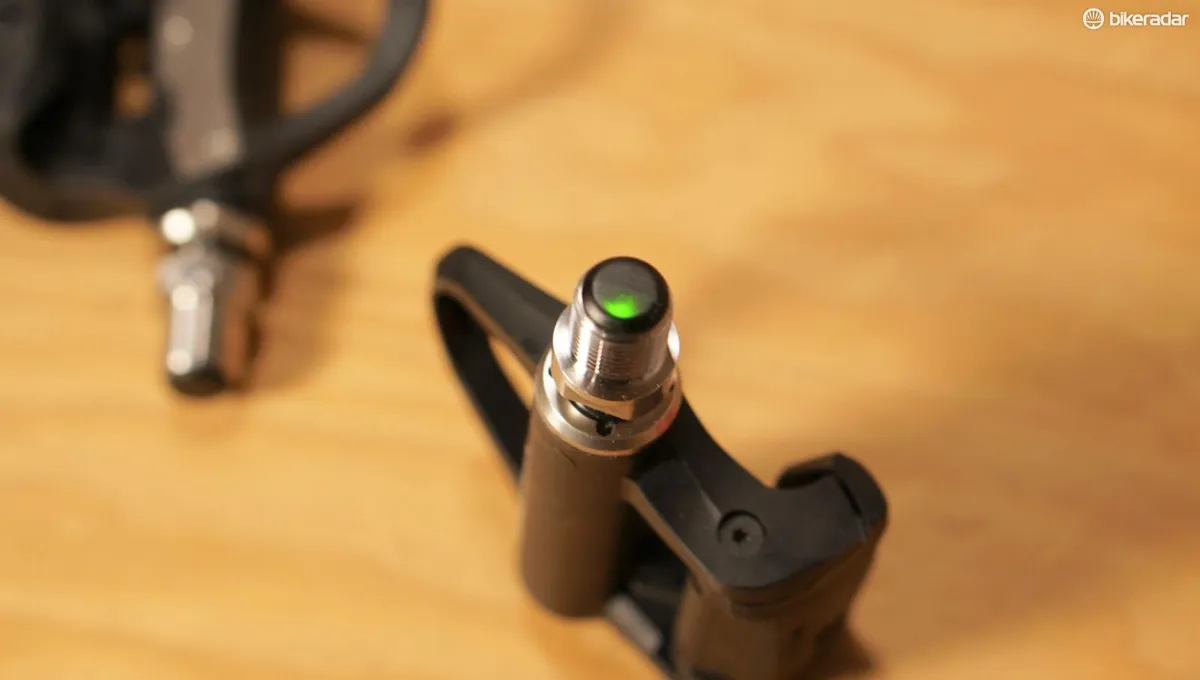
Changes from the Vector 2 pedals
In its third iteration, Garmin has abandoned the dangling pods used to bolt around the spindle of each pedal. Removing these pods improved more than just the looks of the Vectors. First, some rotational weight was removed (roughly 20g per side).
Next, compatibility issues improved. Vector 2 had two width versions depending on which cranks you had, as a plastic strap wrapped around from the back of the spindle to the pod.
For riders who left the pedals on one bike this wasn't an issue, but riders who were attracted to the pedals for their portability from one bike to another faced frustration occasionally. (Years ago I was stumped about why my test Vectors weren't working on a Specialized demo bike until I realized the crank width issue.)
Now, the Vector 3s can be popped onto any bike, regardless of crank-arm width.
But the battery life did drop, going from coin cell 2032 to LR44/SR44. More on that below.
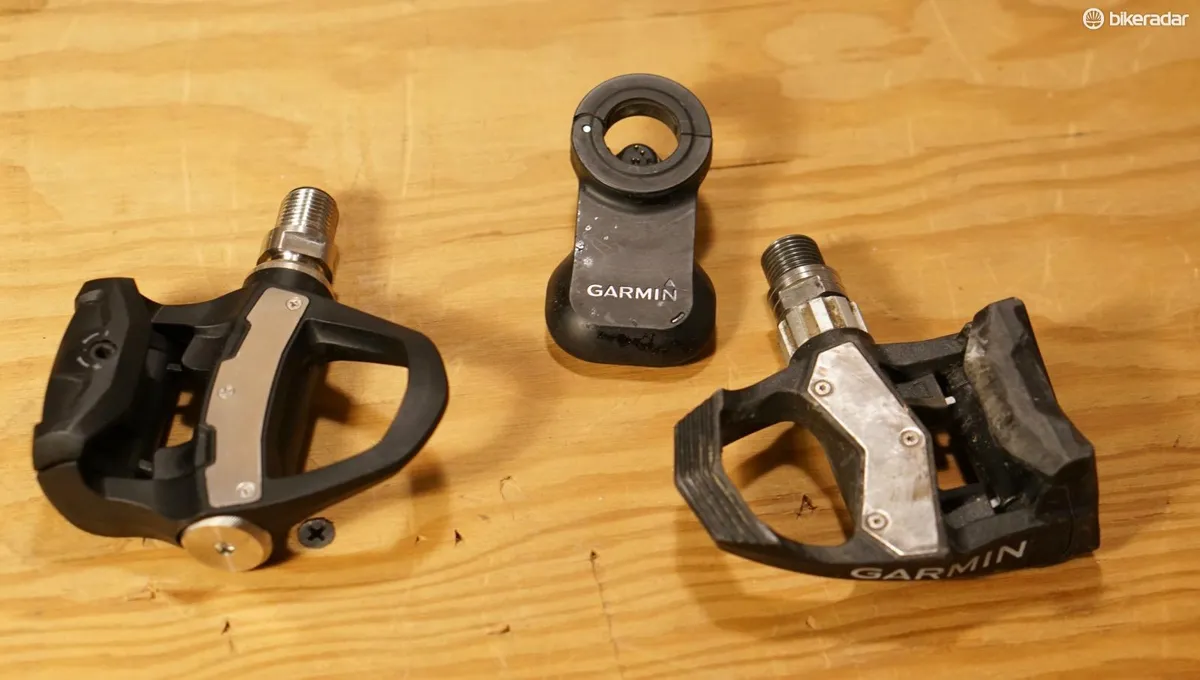
Cleats are still Look Kéo-compatible models. And, as before, you can get detailed left/right features (like Power Phase, which shows where in the stroke you generate power) if you have a newer Garmin Edge computer. With any computer recording a .fit file, you still get left/right power data, just not the same real-time info-graphics on screen.
Vector 3 total power measurement — reliable and consistent
The primary question about any given power meter is the toughest to answer: is it accurate? Since I don’t have a $50,000 dynometer handy, I test 3–4 meters simultaneously and look for trends.
I look at data on the micro and macro levels, overlay multiple meters’ power files from the same ride, compare them in TrainingPeaks and Today’s Plan, and keep running tallies and notes in a spreadsheet.
I did dozens of rides comparing the Vector 3 pedals to multiple meters from Stages, PowerTap, Shimano, Specialized/4iiii and Pioneer plus smart trainers such as the Tacx Neo and the Wahoo Kickr.
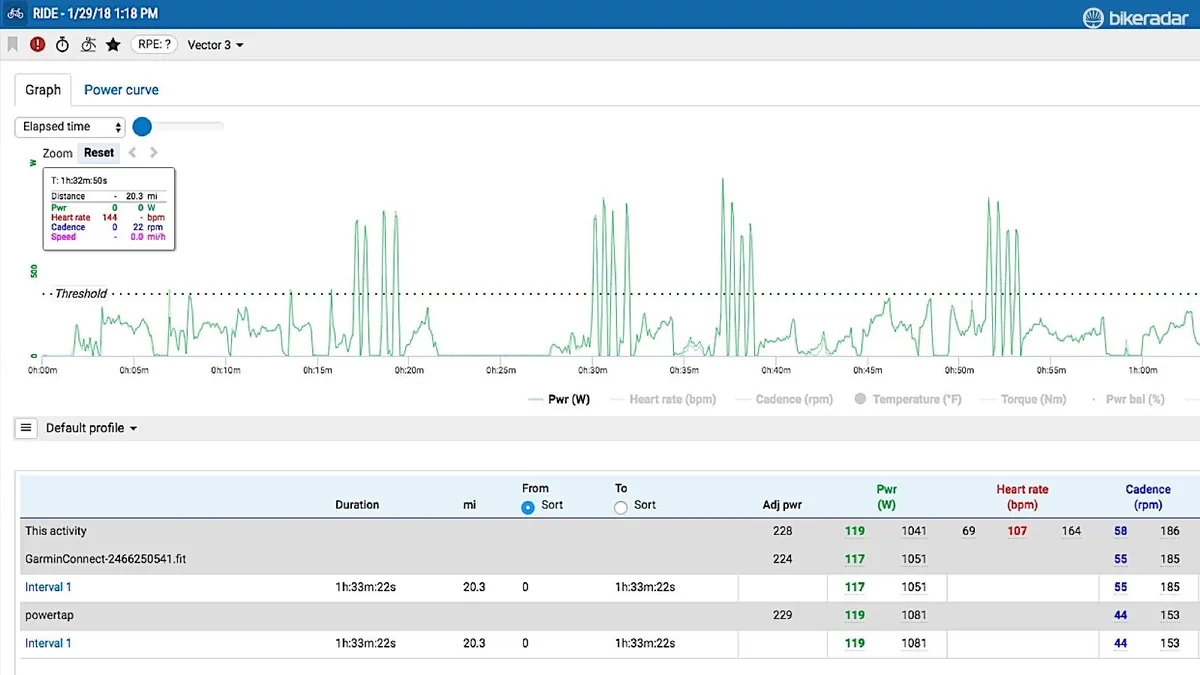
The Vector 3 pedals tracked very well against the total wattage numbers from Stages, Shimano, PowerTap, Tacx and Wahoo, all of which I have confidence in. Even among the best meters there will always be a little variation — the Kickr measures higher than the Neo, the PowerTap measures higher than Stages and Shimano — but the important thing is that they measure consistently.
Week in and week out, the Vector 3 pedals would always measure within single digits of the other meters.
From my perspective, the Vector 3s have improved over the first two iterations. Some of the early Garmin Vector models had consistency issues. While some pedals would be reliable, others would occasionally deliver suspect data. The Garmin pro team very publicly abandoned the Vector meters for SRMs for racing and training. Personally, I've had decent luck with the Vectors. I tested the single-sided Vector S against a Stages, and I have used them for power testing when on the road because of their portability.
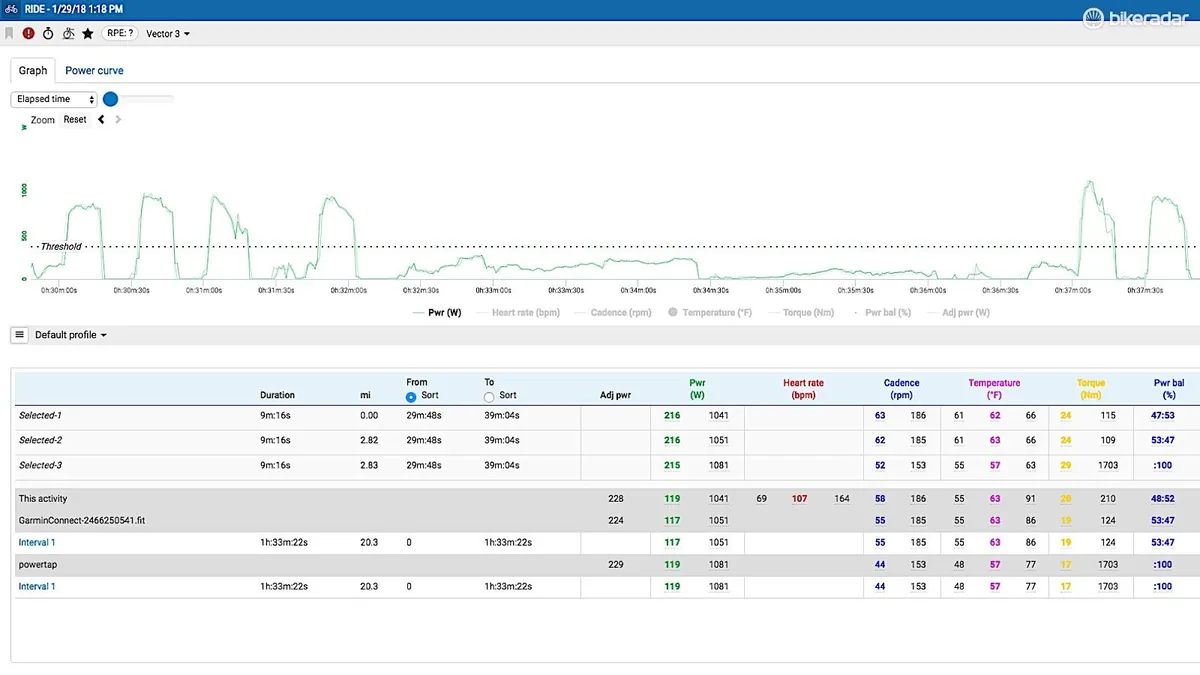
Vector 3 left/right power measurement — balanced, unless on cobbles
There are two ways to get left/right power data. There is the calculation method that Quarq uses, where the company measures at the spider and splits that data in half. Or there is the measurement method, where each leg gets its own meter.
Having both meters measure similarly is more difficult than you might think.
In my experience, Shimano’s new P-9100 meter works very well for total power measurement, but the left side always reads a little higher. That proved the case with two separate meters. In my experience with the 4iiii-produced carbon Specialized Power, the two sides would sometimes drift in measurement, especially on longer rides. And Pioneer’s left/right numbers would often be greater than the normal balance I see with other meters.
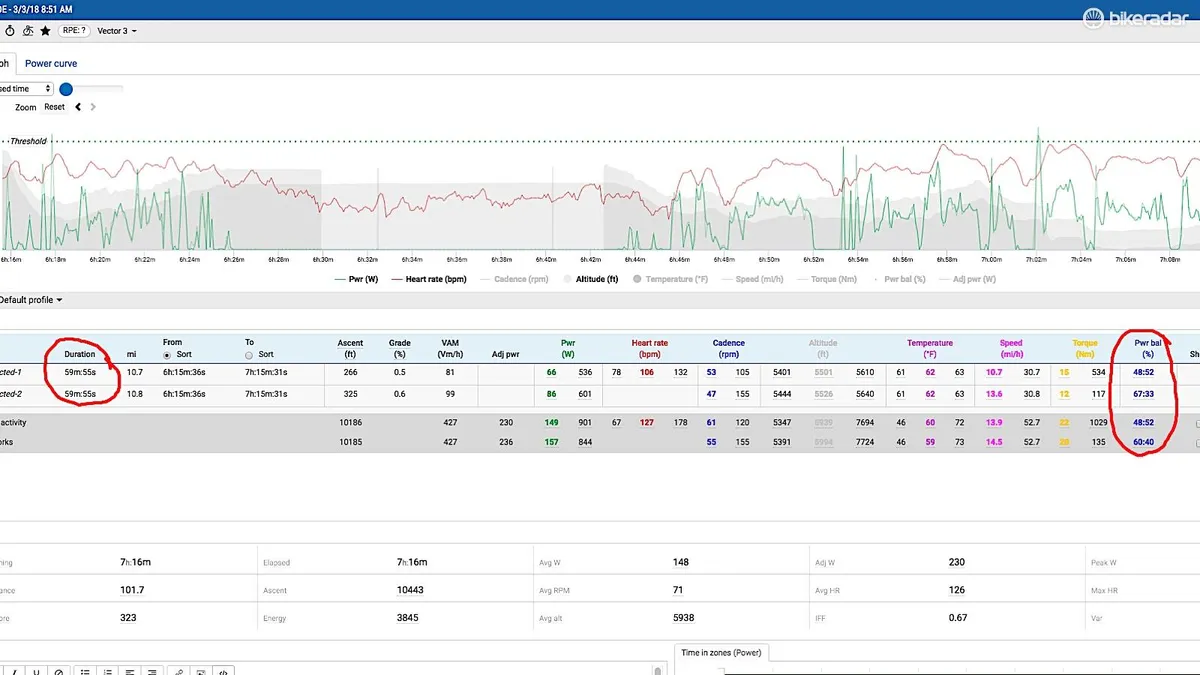
By contrast, the Vector 3s measure the same on each side. When using a control at the hub to standardize the effort and pedal one leg at a time, both sides read the same. And further, over months of testing, my average L/R has been 49.5/51.5, with no rides on asphalt having a greater split than 48/52 or 52/48.
This is consistent with what the Stages Power LR meter has shown over the same rides. Compare that with say the Specialized meter that would sometimes drift to 60/40 on rides.
The only situation I saw total power balance outside the 52/48 range was this spring during a trip to the Classics. Riding on cobbles skewed the power as much as 57/43 to 44/56.
Interestingly, though, when zooming in on certain sections of cobbled rides where I was going harder, the power balance returned to normal, in the 50/50 to 52/48 range. Relatedly, most people will see a greater imbalance when pedaling easy than when going hard.
Dead first sample, and other battery-related grief
The first sample-set I had died after a few weeks' of use. The left pedal just wouldn’t power up, despite trying multiple sets of fresh batteries and — at Garmin’s suggestion — gently pulling the battery connection towards the battery.
The second set I've had since the winter has had no such issue. My former colleague Jamie Wilkins experienced a similar first-set failure with a Vector 2 set he had. As a tester, it’s hard to know how representative any one experience is of the product as a whole.
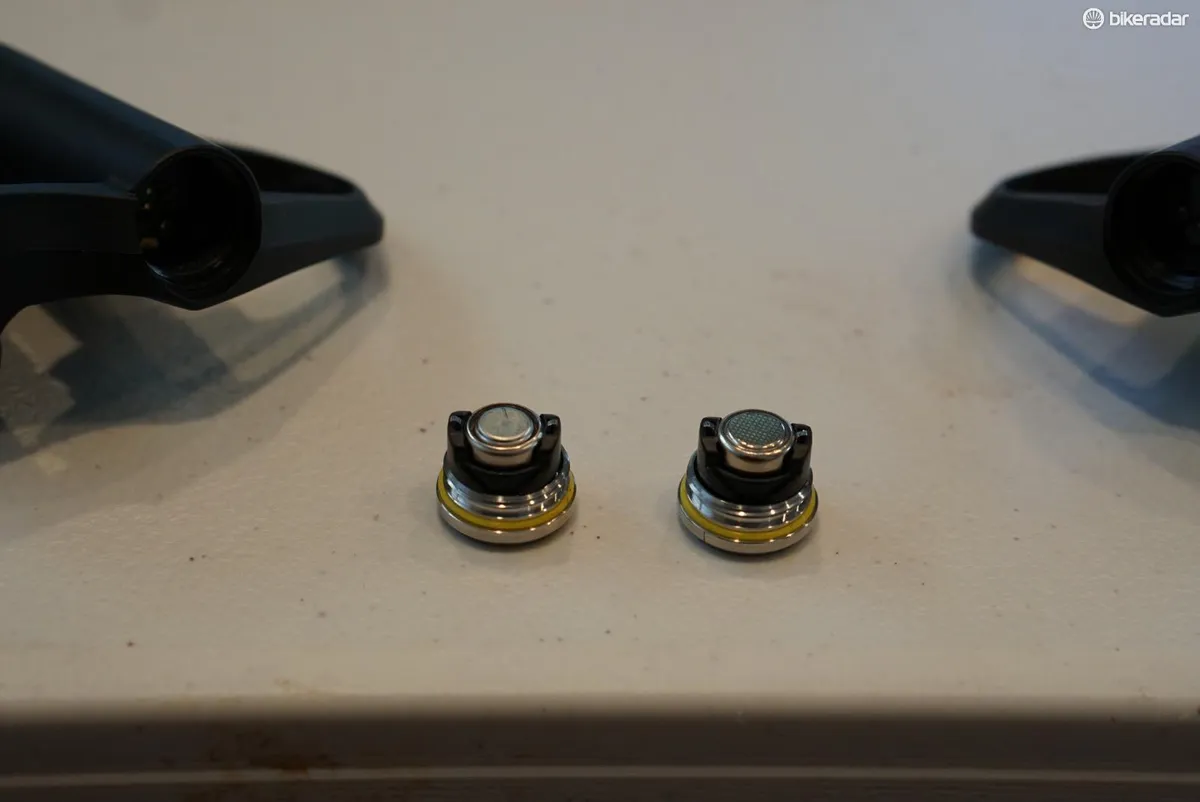
In any event, battery life has proven to be a little disappointing. Garmin claims up to 120 hours for the four LR44/SR44 batteries, but I got more like 60 hours on average. I’m now on my fourth set. Battery pricing depends on where you buy, but at my local grocery store they are $5 a piece.
As with many power meters, you get a low-battery warning on your head unit. On one long ride recently I got a low-battery warning at the start of the ride, but then the meter died completely with two hours of riding still to go. That was frustrating. On that same ride, I also got a curious 3,140w spike. Was this related to the flickering battery charge at the end? I don’t know.

Finally, a teammate on my masters team has experienced his right pedal going out after about three weeks of riding, close to 60 hours of riding, but without a low-battery warning.
What do you do with left/right power measurement?
Left/right power meters are hot now, but so is the question: what exactly do you do with this information? I have been asking power-meter brands, pro riders and coaches about this, and frankly, there isn’t much actionable takeaway.
For riders coming back from a leg injury, having distinct left and right measurement is a good way to quantify recovery. But I have yet to meet a pro rider who has changed his or her training based on left/right data.
Beyond the simple left/right breakdown, the Vector 3s do provide detailed information about where in the stroke power is produced. The visual presentation is cool; it’s not as overwhelming as Pioneer’s 12 arrows per side, but it still indicates where in the pedal stroke each leg is applying power.
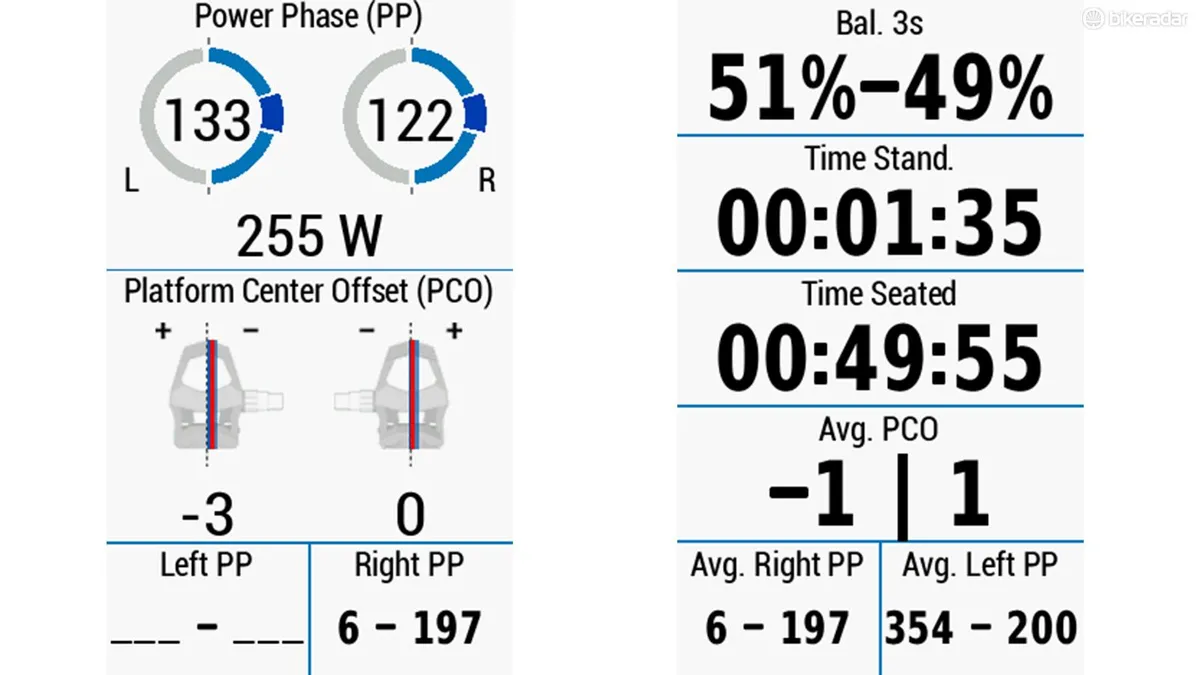
In my view, the best thing about left/right measurement is the initial quantification; many of us have wondered about bilateral power discrepancies, and now you can know. Of course, as detailed above, you have to believe that the system is accurately measuring both sides! And with the Vector 3s, I do believe you get quality, balanced data.
But once that mystery is addressed (and most of us have pretty balanced left/right power, especially when it counts, going hard), then the main focus of training returns to the total power number.
Portability of Vector 3 pedals
You have at least heard, if not told other people, that the important thing in training with a power meter is repeatability. If you train on one meter one day and another meter that reads differently the next, you’re not going to have a clear picture of your training trajectory. Having a consistent tool is paramount. And so, if you have multiple bikes — or you sometimes travel and borrow a bike — then having the same meter makes sense.
Some of you have multiple meters from different brands, and this can cause discrepancies. Some of my coach friends like Frank Overton of FasCat have gone as far as to have distinct FTPs and training zones for each of one rider’s different power meters.
Even if you just have one bike, these pedals are easy to install. You just need a 15mm pedal wrench and a head unit to calibrate the pedals once on. Compared to spider-, crank-, spindle- or hub-based systems, this is a piece of cake.
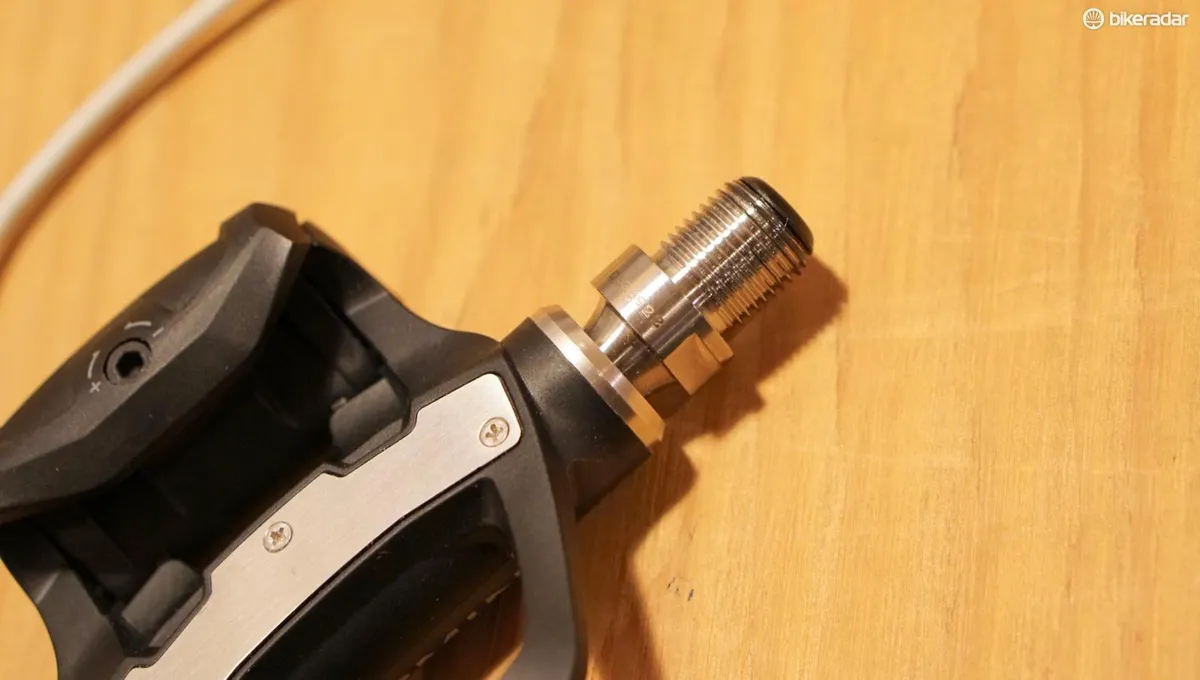
The downside to the convenience of a pedal-based meter is that you can’t use your normal pedals. If you were a Look user before, you’re golden. Everyone else will have to make a switch. One Garmin-sponsored rider who shall remain nameless found that he could use Shimano SPD-SL pedals with the Vectors, although getting in and out wasn’t exactly smooth and float wasn’t what it should be. Neither I nor Garmin endorse this practice though!
I have loved having the Vector 3s for travel and for easily popping a power meter on test bikes. At home, though, I still prefer using my trusty old Shimano pedals.
Bottom line: Garmin Vector 3 is a good power meter if you’re not fussy about pedal choice
After months of testing against a number of trusty power meters, the Garmin Vector 3 has proven to be a generally reliable training tool. The left and right pedal measure similarly and the total wattage number tracks consistently along with good meters and smart trainers.
The convenience of having a power meter in a pair of pedals is undeniable, especially if you have multiple bikes or like to travel and rent or borrow bikes.
The short battery life is frustrating, but if you don’t mind giving up your favorite style of pedal, there isn’t much else negative to say about the Vector 3.
